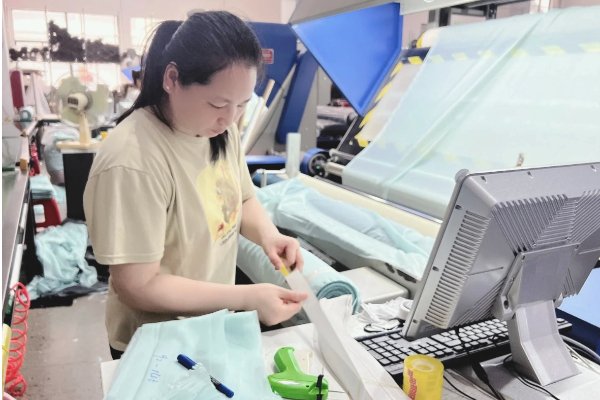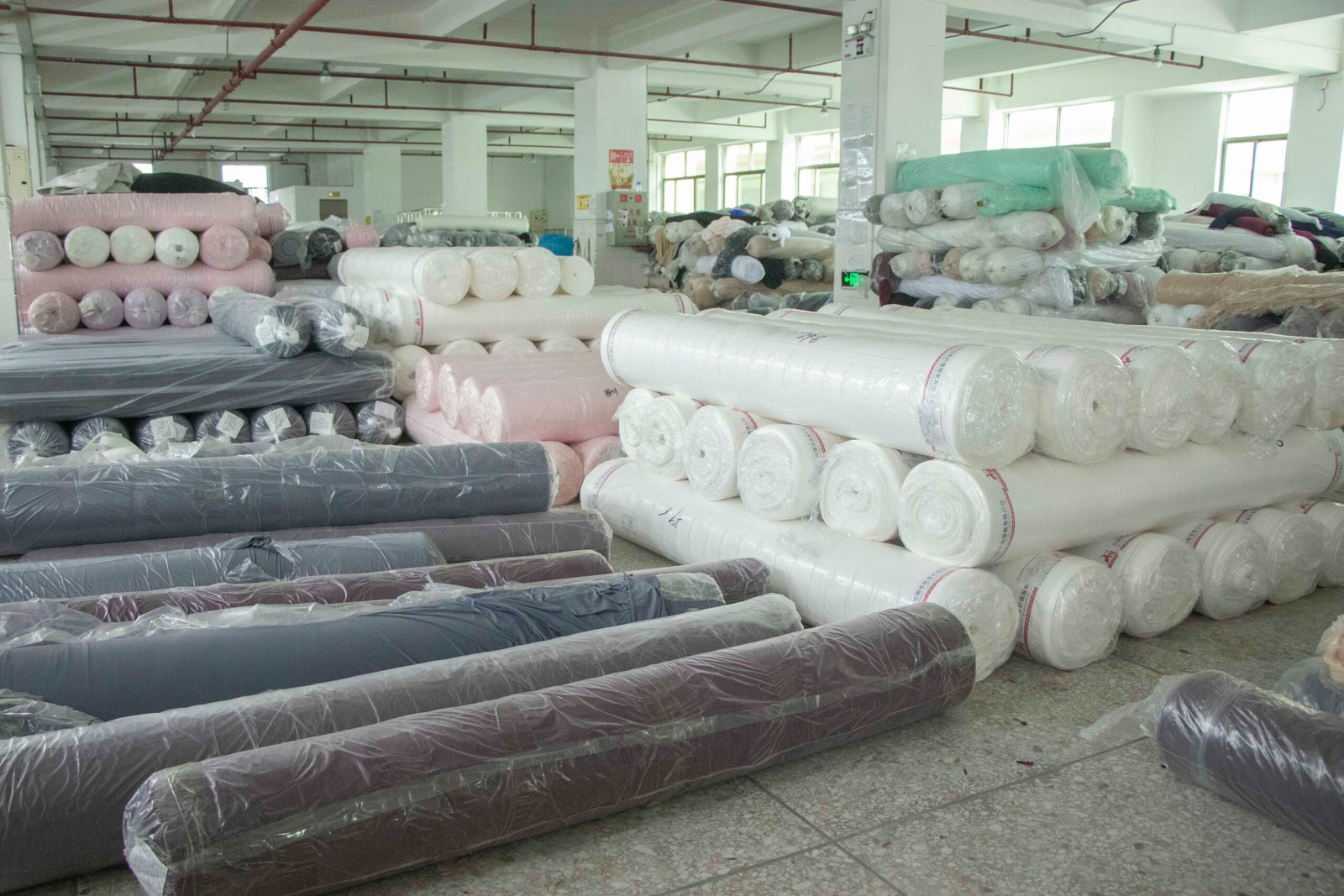What Does the Quality Inspection Process for Undergarments Involve?
Worried about customer complaints from inconsistent sizing, bad seams, or faulty elastic? These small issues can damage your brand's reputation and lead to costly returns and wasted inventory.
A comprehensive quality inspection process for undergarments is a multi-stage system. It starts with raw materials and continues through cutting, sewing, and final packaging. This ensures every piece meets design specifications for comfort, fit, and durability.

From my years in the mold-making industry, I learned a crucial lesson that applies perfectly here: you can't inspect quality into a product at the end. It has to be built in from the very beginning. Just like we check the steel, the design, and the machining at every step of making a mold, undergarments require constant checks. A final look-over is too little, too late. Let's break down the professional process that ensures your products are right every time.
What is the inspection process in the garment industry?
Feeling lost about where quality control even starts in the complex garment production line? Missing a single step means defects get passed along, becoming much more expensive to fix later.
The garment industry's inspection process is a series of checks at key production stages: pre-production (materials), in-line (during sewing), and final (post-production). This builds quality into the product instead of just trying to find mistakes at the end.

This multi-stage approach is the secret to efficiency and consistency. Catching a problem early is always cheaper and easier than finding it in a finished product. For example, discovering a fabric defect before it's cut saves not only the fabric but also the labor costs for cutting and sewing. I remember one time in my early trading days, we visited a factory and found a sewing machine with the wrong tension. We caught it during an in-line check. That single observation saved thousands of units from having weak seams. It’s about being proactive. Each stage acts as a gate, preventing problems from moving to the next phase of production.
| Inspection Stage | When It Happens | What It Checks |
|---|---|---|
| Pre-Production | Before cutting begins | Fabric quality, color, weight; trims like elastic and labels. |
| In-Process (Inline) | During sewing | Stitch quality, seam strength, assembly accuracy, measurements. |
| Final Inspection | After production, before packing | Finished garment defects, measurements, labeling, packaging. |
What is the process of quality inspection?
Does "quality inspection" just mean a quick look for loose threads? If your process is that vague, major functional and aesthetic flaws will definitely slip through to your customers.
The process of quality inspection involves physically checking a garment against a detailed specification sheet. This includes verifying all measurements, checking seam integrity and stitch density, examining for fabric flaws, and ensuring labels and packaging are perfect.

A proper inspection is a disciplined, step-by-step activity. It’s not a casual glance. The inspector needs the right tools: a measuring tape, the approved spec sheet (tech pack), and a master color swatch. The core idea is to compare the physical product to the approved standard. The goal is to remove all subjectivity. For undergarments, this is critical because fit is everything. A half-inch deviation in the waistband can be the difference between a comfortable fit and a customer return. The inspection process turns quality from an opinion into a set of measurable facts. It's the only way to guarantee that the 10,000th piece is as good as the first approved sample.
| Inspection Step | Key Action | Purpose |
|---|---|---|
| Measurement Check | Measure key points against spec sheet | Ensures correct fit and sizing consistency. |
| Visual Check | Look for fabric defects, stains, color issues | Catches aesthetic flaws that customers will see. |
| Workmanship Check | Pull seams, check stitch per inch (SPI) | Guarantees durability and high-quality construction. |
| Functional Check | Test elastic stretch and recovery | Verifies the garment performs as intended. |
What is the quality process in the garment industry?
Do you think quality is just about catching defects at the end of the production line? This reactive approach is expensive and inefficient. True quality management is about preventing defects from happening.
The quality process in the garment industry is a complete system, not just a final check. It includes setting clear standards, training workers, maintaining machinery, and using feedback from inspections to continuously improve production. It’s about being proactive, not reactive.

This is where we separate Quality Control (QC) from Quality Assurance (QA). QC is the act of inspecting—finding the defects. QA is the system you build to stop defects from occurring. In my mold business, I always say that great QA makes QC easier. It’s the same here. A robust quality process includes creating Standard Operating Procedures (SOPs) for every job, from cutting the fabric to packing the box. It involves training operators on what a "good seam" looks like and empowering them to flag issues. It also means regular machine maintenance, because a faulty sewing machine is a defect-making machine. The final inspection reports aren't just for passing or failing a batch; they are data used to find weak spots in the production line. This is how you fulfill the promise of your brand: combining the right design and materials into a perfect product for your target market.
| System Component | Description | Goal |
|---|---|---|
| Quality Assurance (QA) | The overall process and system. | To prevent defects from happening. |
| Quality Control (QC) | The physical inspection of products. | To find and identify defects. |
| SOPs & Training | Clear instructions and skilled workers. | To ensure consistency and reduce errors. |
| Feedback Loop | Using QC data to improve the QA system. | To achieve continuous improvement. |
What is the process of fabric quality check?
Do you assume that the fabric rolls you receive from your supplier are flawless? A single hidden defect in a roll can ruin hundreds of undergarments, creating massive waste before sewing even starts.
The fabric quality check is a systematic inspection of fabric rolls before cutting. It involves checking for visual defects using a point-based system, verifying color against standards, testing for shrinkage, and confirming the fabric weight and construction.

This is the absolute first line of defense in garment quality. You cannot make a quality garment from faulty fabric. The most common method used is the "4-Point System." In this system, an inspector scans the fabric over a lightbox and assigns penalty points for any defects found, based on their size. If a roll accumulates too many points per 100 square yards, it's rejected. Beyond visual flaws like holes, stains, or slubs, we must perform other critical tests. We cut a small swatch, measure it, wash it, and measure it again to test for shrinkage. This data is vital for creating accurate cutting patterns. We also check the color of every roll against the approved master swatch under a calibrated light source to prevent color variations. Finally, we check the fabric's weight in Grams per Square Meter (GSM) to ensure it has the right feel and structure.
| Common Fabric Defects | Description |
|---|---|
| Slub/Knot | A thick, raised spot in the yarn. |
| Hole/Pinhole | Any small opening or break in the fabric. |
| Shading | Color variation across the width of the fabric roll. |
| Stain/Soiling | Any spot of oil, dirt, or dye. |
Conclusion
A strict, multi-stage quality process, starting with the fabric, is non-negotiable. It is the only way to produce quality undergarments that build customer trust and a strong brand.

